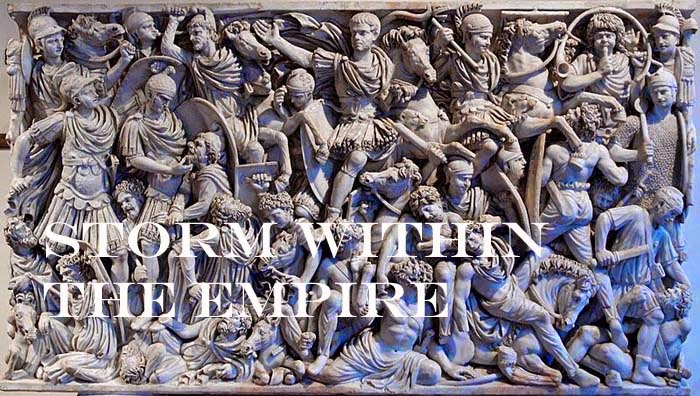The recent victory over the Sassanid had tarnished the military reputation of Shapur II, however, Armenia who bore the brunt of the losses coupled with news of a failed revolt in Persian led Roman command to question the wisdom of continuing the campaign. Thoughts, pro and con, were heard during the military council and the decision was made to cease continuing the campaign and make preparations to recross the frontier.
Aware of Rome’s decision, Shapur II was confident that Rome would relax their march as they approached the frontier. Taking a circuitous route, Shapur II crossed the frontier to position the army to block Rome from continuing its march back home. The gauntlet was cast.
The
Forces.
Each force
fielded a single command but with double the number of elements. Follow the
link to read how DBA24 is played.
To simulate the hilly countryside of eastern Anatolia, two difficult hills and two woods were placed on a board size half times larger (120cm x 80cm) by the defender, Rome.
Battle
Even from a far distance, the glitter of spear points and dust clouds, Rome knew this was no raiding party that confronted them and little time was needed to deploy into battle formation. The legions and auxilia formed two wings with light horse extending their line and behind them, the heavy cavalry formed a second line.
The Sassanid
positioned all their infantry and the elephant corps on the left, skirting the
woods and hills leaving the open plain to be filled by their cavalry to form its
centre and right flank.
The advance of the Sassanid infantry and elephant corps opened the battle against the Roman right wing while the asavaran cavalry skirmished with the legion and auxiliaries on the opposite flank, intent on breaking their formation.
An hour and a half (6 turns) inconclusive fighting had past, then disaster struck as Roman infantry made quick work of destroying the Persian infantry and scattering the elephant corps. With the collapse of the entire Sassanid left, both sides moved their armoured cavalry with Rome looking to make a breakthrough and the Sassanid to stave off disaster.
To the surprise of Rome, the Sassanid broke off their attack to place distance between them and the Roman left wing. Ceasing their advance, Rome made use of the respite to redress its own ranks, but no further hostile activity by the Sassanid was made three quarters of an hour (3 turns).
Footnote: Sassan was 2 short of break point while Rome sat comfortably at the half way mark.
Sensing not
much would be needed to send the Sassanid on their way, both Roman wings moved
forward.
Springing into action, the asavaran moved forward at a trot and showered the Roman line with arrows as the first ranks, with lances thrust forward charged into the Roman line.
The combat was brief as gaps began to appear along the line. Startled at the sudden loss of its line, Rome called for its survivors to withdraw while the reserve cavalry would cover the retreat. Content at having regained its reputation, the Sassanid let Rome retire unmolested. Victory for Sassan, 8 – 6.
















